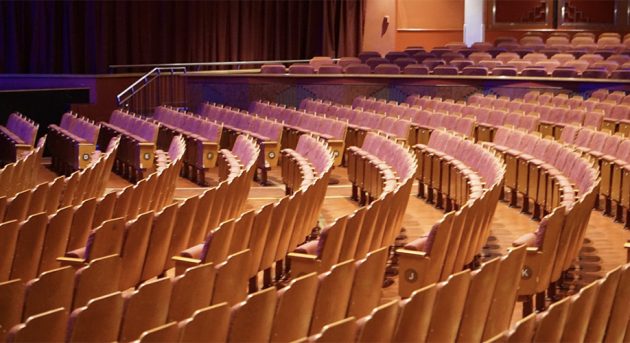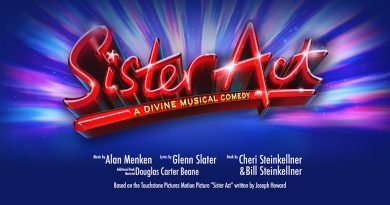Festival Fervor: The Role of Design in Creating Memorable Theatrical Events
When you step into a festival or theatrical event, it’s not just the performances that capture your heart; it’s the world you’ve just entered. A vital element of this enchantment is the design. Imagine walking into a space transformed into a Shakespearean era setting, where every detail, from the rustic tavern tables to the flickering lanterns, contributes to the story. It’s the power of scenic design that turns a mere stage into a living, breathing world.
Event managers and designers must think like magicians, conjuring realms that transport audiences to other times and places. The key lies in understanding the narrative deeply and reflecting it in every aspect of the design. For instance, choosing the right color palette can subtly evoke the mood of the era or the underlying themes of the play. The goal is to create an atmosphere so immersive that attendees forget they’re in a theater and feel like they’re part of the narrative. For a truly memorable event, ensure that every visual element, from the grand set pieces to the smallest prop, tells a part of the story.
The Symphony of Lights and Sounds: Harmonizing Technical Elements
Lighting and sound design are the unsung heroes of theatrical events. They’re the subtle, yet powerful forces that shape audience emotions and perceptions. Picture a heart-wrenching scene, its impact amplified by a single spotlight and a haunting violin score, creating a bubble of intimacy in a room full of people. Or consider an upbeat festival, where vibrant lights dance to the rhythm of high-energy music, infusing the air with excitement.
These elements must be expertly choreographed, working in tandem with the performance to enhance, not overshadow, the storytelling. The art lies in striking the perfect balance, ensuring that technical prowess supports the narrative rather than competes with it. A tip for event managers: always conduct thorough sound and light rehearsals to ensure synchronicity with the performance. This preparation helps in creating a seamless experience that captivates the audience from start to finish.
Costume Chronicles: Weaving Stories Through Fashion
Costumes are the visual shorthand of character and era, instantly communicating who someone is and the world they inhabit. In the hands of a skilled designer, fabric and thread become tools for storytelling. Whether it’s the flamboyant attire of a cabaret performer or the worn-out clothes of a character from a Dickens novel, each garment tells a story.
These sartorial choices shape the audience’s understanding and connection with the characters, providing insights into their lives without a single word being spoken. The magic lies in the details – the way a dress moves, the patina on a jacket, or the choice of a hat – all coming together to create a tapestry of visual storytelling. From an event manager’s perspective, it’s essential to work closely with costume designers to ensure that the outfits reflect the era, culture, and personality of each character, thereby enhancing the authenticity of the performance.
Digital Artistry: Bridging Traditional and Modern Techniques
In today’s digital age, the incorporation of technology in design is not just a trend; it’s a necessity. Video projections, digital backdrops, and augmented reality elements offer new dimensions to storytelling, allowing for dynamic, engaging experiences. These technologies enable designers to create fluid, changing environments, adapting to different scenes and moods seamlessly.
However, the challenge lies in integrating these modern tools without losing the essence of traditional theater. The key is to use technology to enhance, not replace, the fundamental elements of scenic design, ensuring that the soul of the narrative remains intact. For instance, using projection mapping to create a dynamic backdrop can add depth and movement to a scene without detracting from the actors’ performances. This blend of old and new can create a visually stunning and emotionally engaging experience for the audience.
Crafting Connections: The Role of Design in Marketing
In a world where social media reigns supreme, the design of promotional materials is crucial in capturing audience attention. This is where tools like VistaCreate come into play, especially as a facebook ad maker. With its intuitive design interface, event managers can create visually stunning Facebook ads that resonate with their target audience, driving interest and ticket sales.
The trick is to ensure that the aesthetics of the ad reflect the essence of the event, creating a seamless visual narrative that begins with the first click and culminates in the live experience. For effective marketing, align the style and mood of your promotional content with the event’s theme. This consistency in design helps in building anticipation and excitement, setting the stage for a successful event.
The Finale: Leaving a Lasting Impression
The ultimate goal of design in theatrical events is to leave a lasting impression, to create moments that linger in the audience’s minds long after the curtain falls. It’s about crafting experiences that resonate on an emotional level, whether it’s the awe of a beautifully designed set, the connection felt through a character’s costume, or the thrill of an impeccably timed lighting cue.
As event managers and designers, our role is to weave these diverse elements into a cohesive, unforgettable tapestry, ensuring that each attendee walks away with a story worth telling. Remember, the success of an event is measured not just by the applause at the end, but by the memories and emotions it leaves behind. A well-designed event can become a cherished memory, a topic of conversation, and an inspiration for future creatives.
Engaging the Audience: Interactive Elements in Theatrical Design
Interactive design elements can significantly enhance the audience’s engagement and immersion in a theatrical event. By breaking the traditional barriers between the stage and the audience, these elements invite attendees to be a part of the narrative, creating a more dynamic and memorable experience.
Incorporating interactive features like audience participation segments, immersive installations, or even integrating social media interactions into the event can make the audience feel like active contributors to the performance. For instance, allowing audience members to choose the outcome of certain scenes via live voting can add an element of excitement and unpredictability. Event managers should consider how these interactive elements align with the overall theme and narrative of the event to ensure they add value and depth to the experience, rather than being mere gimmicks. The key is to create a balance where these elements enhance the storytelling and engage the audience without detracting from the central narrative.



